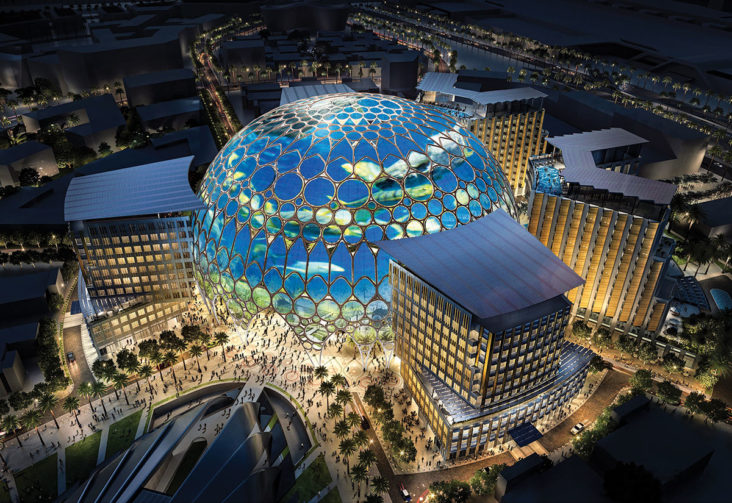Expo 2020 Dubai Pavilions Celebrate World’s Lushness

A love of nature is something very much on display across a range of pavilions at Expo, with each offering their own interpretation of greenery, forests and animals.
The Singapore Pavilion, for example, houses more than 170 species of plants, as seen on everything from hanging gardens to vertical walls. To achieve this green, multi-layered landscaping look, many plants were procured from Dubai nurseries for pre-growing from 2019, and more than 150 trees and palm trees were planted on-site.
In the Malaysia Pavilion, visitors are surrounded by three ‘green walls’, or small vertical gardens, as they walk down the winding slope that leads them to the galleries within. A rainforest-style hall, surrounded by some 3,000 trees, immerses visitors with the visuals and acoustics of thunderstorms, fog and animal calls, as well as flowing water and abundant foliage, while 3D projection maps show the many famous animal species in the country.
Then the Sweden Pavilion, itself referred to as ‘The Forest’, features 2,500 cubic metres of wood from the Söderbärke locality, designed to reduce carbon emissions and express the Swedish way of life. The design channels the diversity and breadth of the forest, with small open spaces, and even treehouses. Sweden claims to plant more trees than it cuts down, with forests representing more than 70 per cent of the country’s landscape.
Next is the Cambodia Pavilion, with a virtual visit to the beach, and the sounds of waves and seagulls. Visitors can also learn about the agricultural sector, which is essential to the economy, and the most important crops and seeds produced by the country, as well as the tools used.
The Suriname Pavilion, representing the smallest country in Latin America – yet one where forests cover 93 per cent of the land – is also worth a look. Here, visitors can wander between waterfalls and greenery, learn about the local wildlife the state is trying to protect from extinction, and discover rare species.


